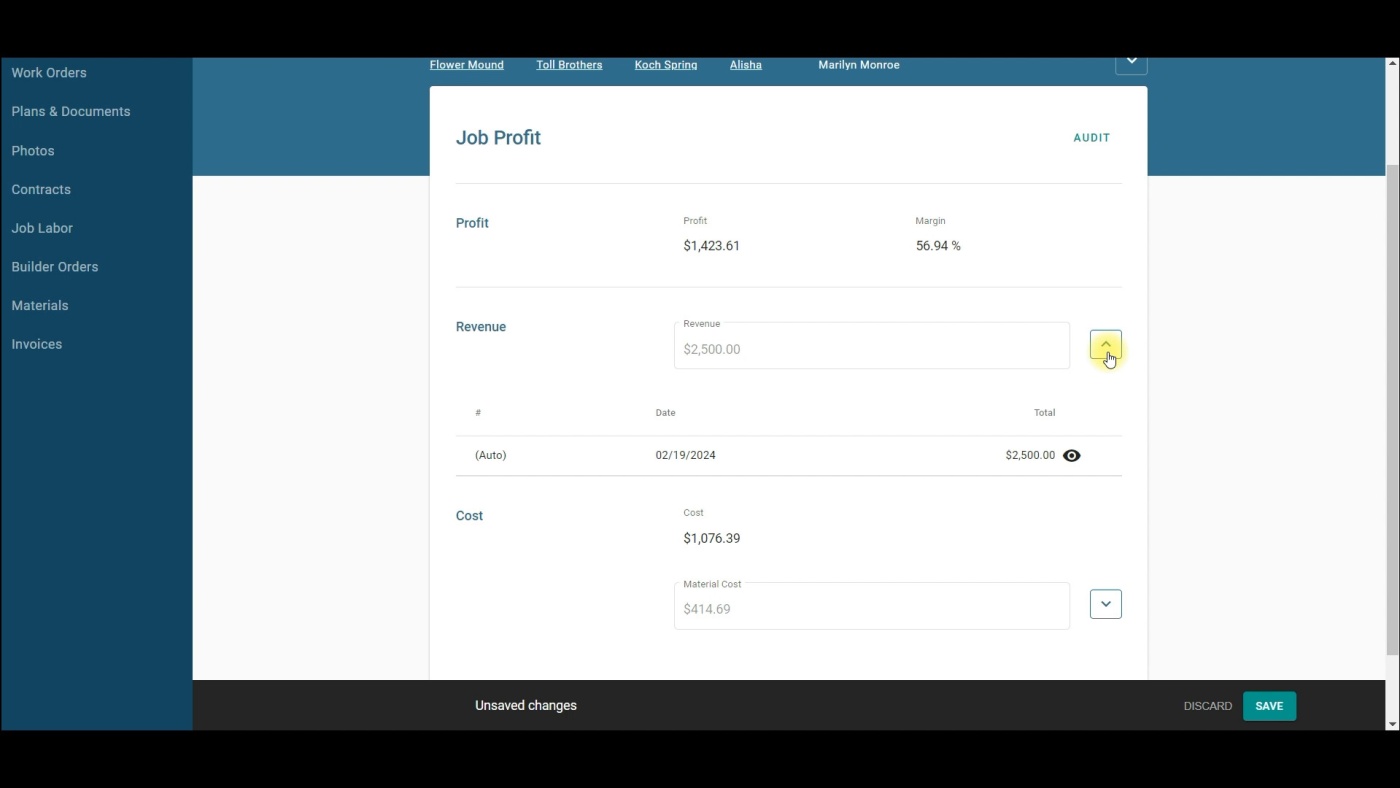Home > Blog
Read Time — 4 minutes
Unleashing Profit Potential: Introducing Job Profit for Trade Contractors

In trade contracting, owners continually face the challenge of efficiently managing and optimizing their financial performance per scheduled jobs.
Introducing job profit for trade contractors
Recognizing this need, we are thrilled to introduce a groundbreaking enhancement to our Bolt project management and scheduling software - Job Profit. Tailored for owners of trade contracting businesses, Job Profit offers an automated solution for calculating profit and loss per scheduled job, revolutionizing the way businesses navigate their financial landscape.
Empowering owners with real-time financial insights
The primary goal of Job Profit is to provide owners with an automated and intuitive system to effortlessly determine the profitability of each scheduled job. By integrating profit and loss calculations directly into the scheduling process, this enhancement aims to offer real-time insights into the financial performance of projects. Whether overseeing multiple projects or focusing on a specific job, owners can now have a clear understanding of the financial implications at every step of the way.
Addressing current challenges and pain points for trade contractors
Currently, owners and managers often lack precise knowledge of the profit made from each job, relying on rough estimates or waiting for end-of-year bookkeepers. This leads to delayed and error-prone information spread across all jobs. The inability to quickly identify potential profit loss areas results in missed opportunities for long-term profit. Job Profit addresses these challenges by providing a dedicated section within the new Bolt UXUI, allowing for comprehensive job profitability analysis.
Job Profit software demo

How this feature works for you
Job Profit features a simple yet powerful interface within the Job Folder of the new Bolt UXUI. It provides a total profit overview, showcasing revenue, material costs, labor costs, and the ability to drill down into each invoice, pull sheet, and pay item. All this information is now automated, eliminating the need for manual work in gathering crucial financial data.
Why this is important to owners
The ability to accurately track and analyze profit margins on each job is crucial for the success and growth of trade contracting businesses. Job Profit ensures that owners have a clear understanding of the financial implications at every step, facilitating informed decision-making, optimizing costs, and ensuring long-term success and profitability.
Key benefits for the owners of trade contracting businesses
The owner can now set a threshold of jobs that don't meet X% profit margin to quickly identify why, and solve, or never do certain jobs again from that home builder.
- Profit optimization: Knowing the exact profit margins on each job allows owners to identify areas where costs can be reduced, or efficiency improved. This optimization can lead to higher overall profits for the business.
- Cost management: Detailed job profitability analysis helps in understanding the breakdown of costs associated with different projects. This information enables better cost management and resource allocation, preventing unnecessary expenses.
- Timely decision-making: Real-time access to profit data allows owners to make informed and timely decisions. They can identify potential profit loss areas quickly and take corrective actions before the issues escalate, ensuring long-term profitability.
- Strategic planning: Accurate job profitability data is essential for strategic planning. Owners can use this information to identify profitable niches, prioritize certain types of projects, and make informed decisions about the direction of the business.
- Competitive advantage: Businesses that can effectively manage and optimize their profits have a competitive advantage. They can bid more competitively, win more projects, and build a reputation for delivering quality work within budget.
- Cash flow management: Understanding the profit margins helps with better cash flow management. Owners can anticipate financial needs, plan for investments, and ensure the business remains financially stable.
- Performance evaluation: Tracking profits on a per-job basis provides a basis for evaluating the performance of different projects, teams, or employees. This information can be used for performance reviews, incentives, and training programs.
- Financial planning: Accurate profit data contributes to more reliable financial forecasting. Owners can set realistic financial goals, plan for growth, and secure financing with confidence.
Consider these questions when reflecting on job profitability
- What method do you use to determine the profit earned from each job?
- How much time is invested in collecting this information?
- What measures do you take to ensure the accuracy of the profit data?
- Have you assessed the amount of time and energy expended on unprofitable jobs that could have been identified earlier?
Conclusion
Job Profit is more than a feature – it's a catalyst for transformation. It equips owners with the tools they need to navigate the intricate financial landscape of trade contracting, transforming challenges into opportunities and ensuring that every project contributes to the long-term success and profitability of the business. With Job Profit, the journey to financial mastery begins, opening doors to new possibilities and elevating trade contracting businesses to unprecedented heights.
- If you are a trade contractor struggling with project and job profit management, check out Bolt software.
- Sign up for a free demo today and see how Bolt software can help you take control of your scheduling instead of your schedule controlling you.



